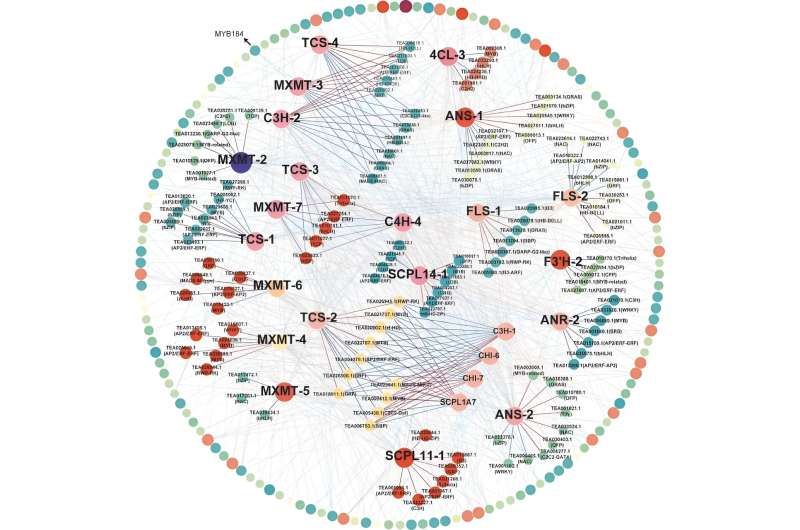This article has been reviewed according to Science X's editorial process and policies. Editors have highlighted the following attributes while ensuring the content's credibility:
fact-checked
proofread
Novel study reveals the accumulation mechanisms of purine alkaloids and catechins in theobromine-rich tea

Camellia ptilophylla, a low-caffeine or decaffeinated tea, is increasingly being recognized for its potential health benefits. However, there is intraspecific diversity in purine alkaloid and catechins components in C. ptilophylla populations. Analyzing the mechanisms behind the accumulation of these metabolites is important for improving tea quality.
Beverage Plant Research
published online a paper by Associate Professor Binmei Sun and Shaoqun Liu's team at South China Agricultural University titled "Differential accumulation mechanisms of purine alkaloids and catechins in Camellia ptilophylla, a natural theobromine-rich tea" on 27 June 2023.
In this study, researchers first analyzed the accumulation of purine alkaloids in C. ptilophylla populations (32 plants) and showed that theobromine (TB) was the sole alkaloid in 26 individual plants, while the other six C. ptilophylla plants had higher caffeine and lower TB.
Next, RNA-seq analysis of two C. ptilophylla plants with contrasting purine alkaloid contents showed that the expression of xanthine synthesis genes TCS-2, TCS-3 and MXMTs were up-regulated, while the genes of the purine alkaloids degradation pathway were significantly down-regulated in TB-rich plant. In addition, the expression pattern of catechin biosynthesis pathway genes was altered in TB-rich plants.
These up-regulated catechin biosynthesis pathway genes were associated with phenylpropanoid and flavonoid biosynthesis, which are essential for the production of gallocatechin gallate (GCG). The co-expression networks constructed with 327 transcription factors identified by RNA-seq, purine alkaloids and catechin biosynthesis genes elucidated the potential regulatory mechanisms of gene expression in C. ptilophylla populations.
In conclusion, this study uncovers different accumulation mechanisms of purine alkaloids and catechins in C.ptilophylla populations. These insights will facilitate the breeding of low-caffeine or high GCG tea tree varieties to meet the different needs of consumers and lead to healthier consumption options.
More information: Chentao Ying et al, Differential accumulation mechanisms of purine alkaloids and catechins in Camellia ptilophylla, a natural theobromine-rich tea, Beverage Plant Research (2023). DOI: 10.48130/BPR-2023-0015
Provided by Maximum Academic Press




















